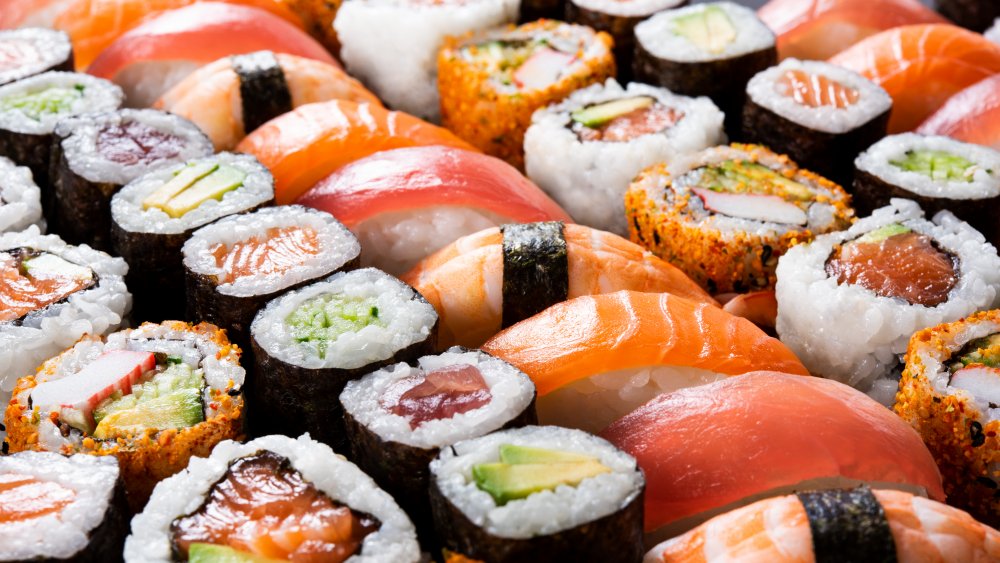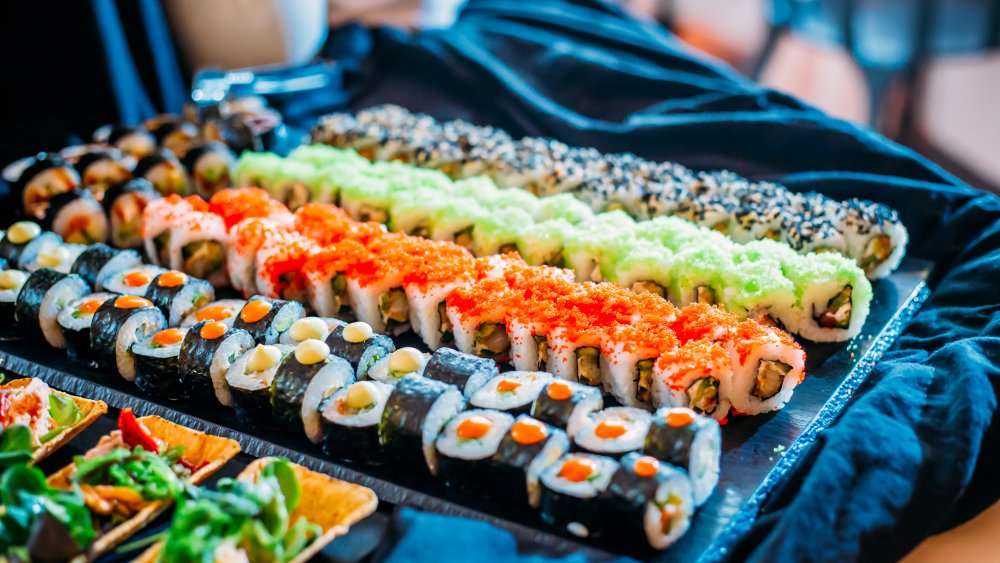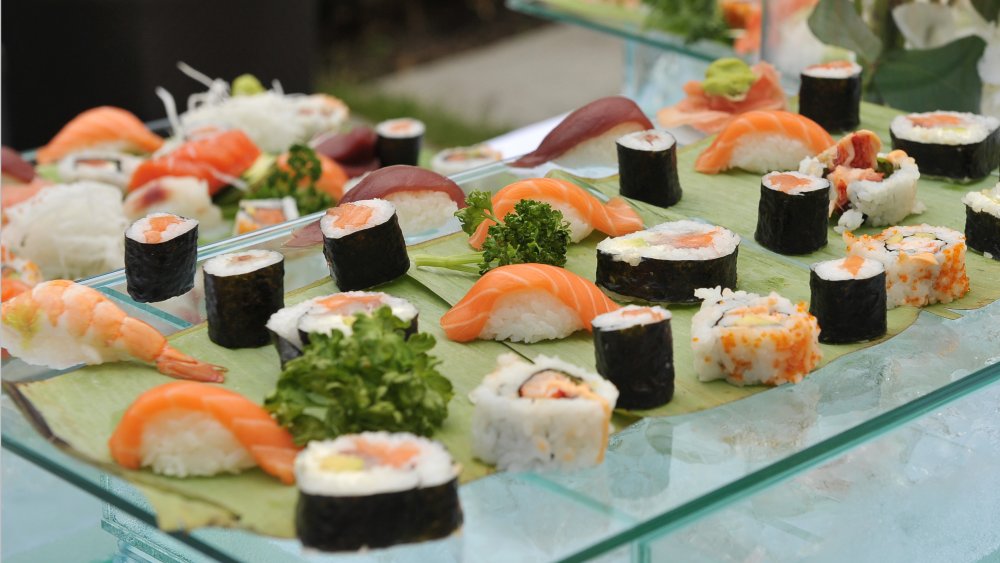The Reasons You Shouldn't Eat Sushi At All-You-Can-Eat Buffets
When it comes to the sometimes-sketchy setup of buffets, there are plenty of items on which diners should take a hard pass — and sushi is no exception.
Think about it: There's a reason for that warning on restaurant menus that states, "Consuming raw or undercooked meats, poultry, seafood, shellfish, or eggs may increase your risk of foodborne illness" (via Livestrong).
According to the USDA, though any food can cause foodborne illness, "raw foods of animal origin," including raw shellfish, "are the most likely to be contaminated." That's a matter of basic biology: "Because filter-feeding shellfish strain microbes from the sea over many months, they are particularly likely to be contaminated if there are any pathogens in the seawater." The process of cooking kills those disease-causing organisms, but that's of course notably absent in sashimi and many types of sushi.
The Minnesota Department of Health notes that foodborne illness can cause a variety of symptoms over a one- to seven-day period — most commonly, diarrhea and/or vomiting, but other possibilities include stomach cramps, nausea, fever, aches in the back or joints, and fatigue. And it can be difficult to pin down the exact source of foodborne illness, thanks to an incubation period of anywhere from a few hours to one week.
Raw seafood can harbor parasites, bacteria, and viruses
Unfortunately, sushi consumed even in the best of circumstances remains a risk. The FDA warns that larval-stage parasites — including ick-inducing presences like roundworms, tapeworms, and trematodes — are the biggest issues in "uncooked and undercooked seafood" and "can present a human health hazard," ranging from "mild to moderate illness" to "severe symptoms."
To be fair, Seafood Health Facts points out that all living things — not just fish — may harbor parasites in two main forms: parasitic worms and protozoa. Parasites are the greatest concern in "raw or lightly preserved fish such as sashimi, sushi, ceviche, and gravlax," as they can be killed during freezing or cooking. In fact, the FDA does recommend freezing fish "intended for raw consumption," but behind the scenes at a buffet (never mind the supply chain that preceded its arrival), who knows what's happening? Even worse, Seafood Health Facts asserts that parasite-related health risk "is far less than the risk from bacterial pathogens and mishandling of seafood."
Indeed, UPMC HealthBeat warns that raw fish may also contain and transmit bacteria and viruses (contaminated sushi can cause listeria, for example), while parasites can cause a disease called anisakiasis, which leads to food poisoning. Add a buffet setting (where food sits out for indeterminable lengths of time) to these already present concerns, and it's clear that buffet sushi presents even more of a gamble.
More possible dangers and downsides of buffet sushi
Yes, it's tempting to cash in on the presence of often-expensive sushi when you've already shelled out for an all-you-can-eat dinner, but you may want to restrain yourself. According to Reader's Digest, buffet sushi can cause foodborne illnesses such as salmonella, which is only exacerbated by the setting — after all, maintaining safe temperatures (even if the food is placed on ice) is a tricky task, and hordes of buffet-goers sharing those same serving utensils means cross-contamination among diners is a distinct possibility.
Then there are downright despicable "sanitation" procedures by individual restaurants that can turn anyone's stomach. In one horrifying example, an inspector recently found a "mold-like substance" on ice and 150-plus "rodent droppings" at a sushi buffet in Florida (via WPLG).
Not surprisingly, serious lawsuits have plagued these establishments over the years: In 2019, a sushi buffet restaurant in Montgomery, Alabama, came under fire after a diner there "suffered from E. Coli which resulted in septic shock and serious damage to several of his vital organs," ultimately leading to his death (via Montgomery Advertiser).
Is buffet sushi a worthwhile risk?
If you must hit a buffet, Reader's Digest issues some safety suggestions: Wash your hands upon entering the restaurant (before touching any serving utensils); use utensils, never your hands, to put food on your plate; and always retrieve a new plate when you return to the buffet line.
But even with the proper precautionary procedures, keep in mind that risks may still present themselves. Unfortunately, as The Daily Meal notes, existing bacteria in fish "can multiply exponentially in as little as an hour," but if getting your money's worth is truly the focus, there's another reason to avoid sushi at the buffet line: All of that rice in premade rolls adds up, filling stomachs fast and ultimately leaving less room for other prime food options.
The verdict? If an endless array of sushi is your goal, it might be safer to visit all-you-can-eat locations that make rolls and sashimi fresh to order instead.



